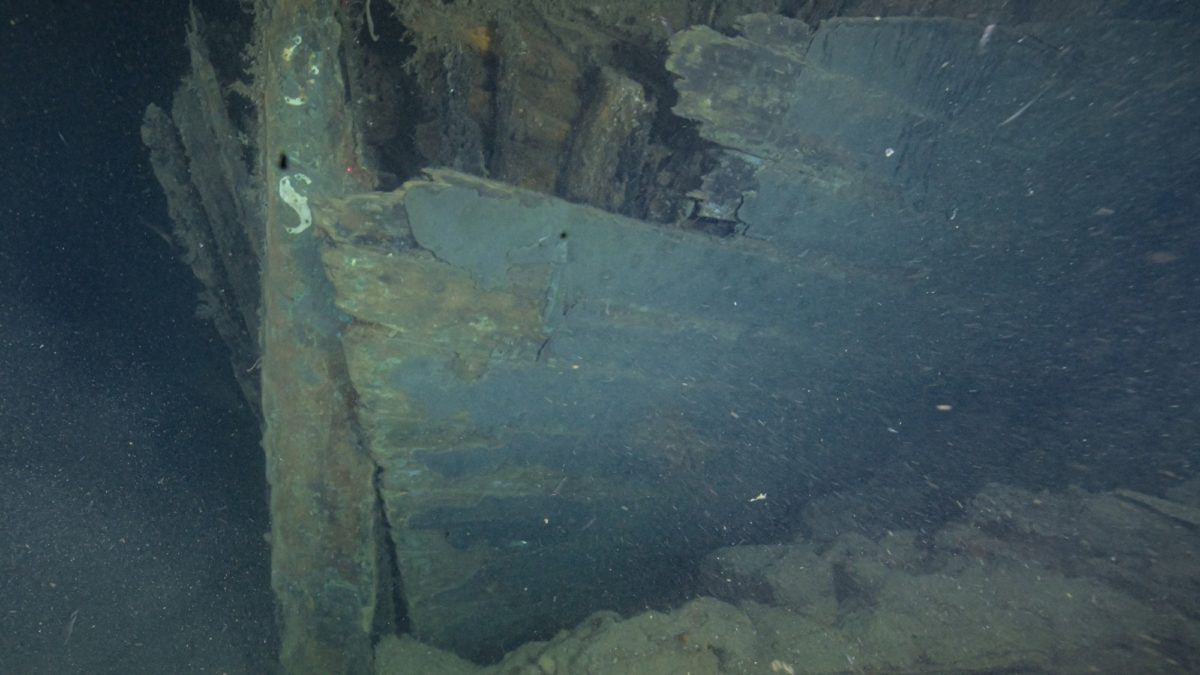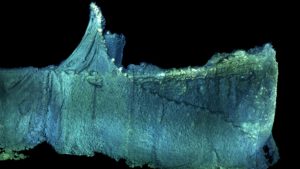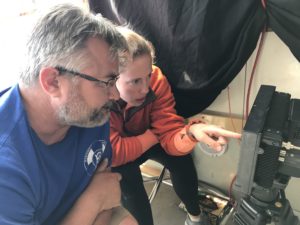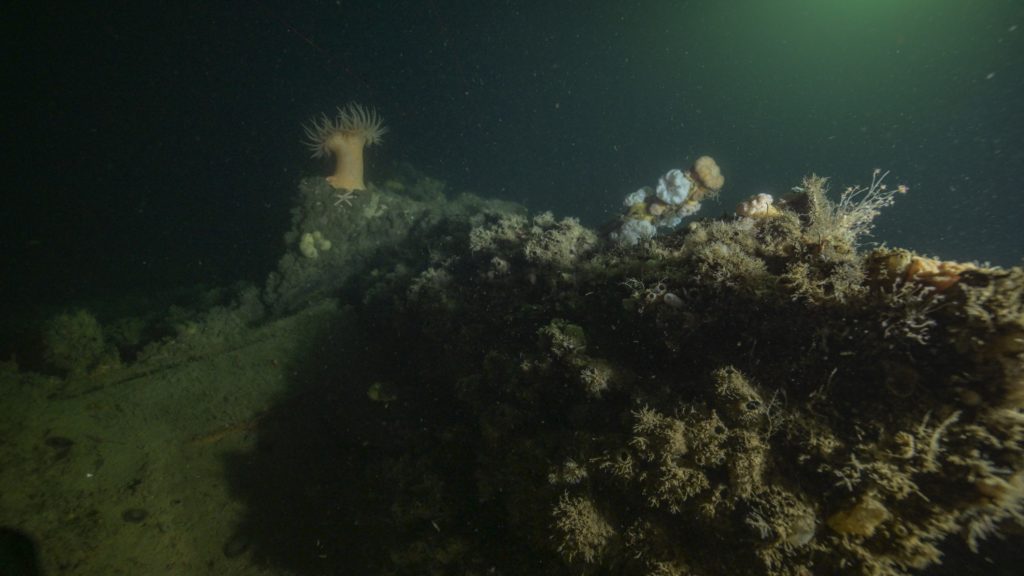Biden-Harris Administration invests $27 million to support community-driven marine debris solutions through Investing in America agenda
 An unidentified coal schooner in Stellwagen Bank National Marine Sanctuary, one of the many shipwrecks threatened by marine debris. (Photo credit: Marine Imaging Technologies)
An unidentified coal schooner in Stellwagen Bank National Marine Sanctuary, one of the many shipwrecks threatened by marine debris. (Photo credit: Marine Imaging Technologies) July 29, 2024
Woods Hole, Mass. - The Department of Commerce and NOAA has announced $27 million in funding for projects to prevent and remove marine debris in coastal and Great Lakes communities as part of President Biden’s Investing in America agenda, under the Bipartisan Infrastructure Law.
This funding will support innovative research and foster local coalitions to address urgent marine debris issues by using NOAA Sea Grant’s partnered approach to bring science together with communities for solutions that work.

Screenshot from a 3D model showing a large fishing net draped over the starboard side of the shipwreck Portland. (Photo credit: Marine Imaging Technologies)
A team led by Woods Hole Oceanographic Institution (WHOI) researchers Kirstin Meyer-Kaiser and Robin Littlefield in partnership with WHOI Sea Grant is one of the recipients. The project will focus on the prevention, education, and removal of marine debris from underwater cultural heritage locations.
“The entanglement of marine debris on shipwrecks damages hotspots of biodiversity and degrades these monuments to human history at sea,” explained project lead Meyer-Kaiser, an associate scientist in biology at WHOI. “This project will tackle the problem of marine debris entanglement on or near shipwrecks, including abandoned, lost, or discarded fishing gear, by creating a set of policy recommendations for marine debris prevention and management, a set of interactive classroom lessons and a multimedia exhibit, and a low-cost ROV enabling rapid recovery of abandoned, lost, or discarded fishing gear.”

Kirstin Meyer-Kaiser and Calvin Mires at sea on R/V Dawn Treader, watching a live video feed showing fishing gear entangled on the shipwreck Portland in 2019. (Photo credit: Liz Weinberg/NOAA)
Robin Littlefield is a senior engineer in Applied Ocean Physics & Engineering at WHOI. “Removal of deep-water marine debris requires innovative, accessible technology, and we will work with stakeholders to scope the requirements for a low-cost, gear-removing robotic vehicle. WHOI’s Deep Submergence Laboratory will build upon an existing prototype rescue vehicle designed for oceanographic equipment recovery, with a goal to develop a comparatively small system to perform highly mobile exploration and equipment recovery in harsh environments. We’re excited to extend these innovative solutions to applications in mitigation and clean-up of derelict fishing gear and ghost gear.”
“Marine debris can present significant threats to the water quality, habitats and economic opportunity for our coastal and Great Lakes communities, but thanks to President Biden’s commitment to investing in America, we are taking steps to remove and address marine debris,” said U.S. Secretary of Commerce Gina Raimondo. “With funding from the Biden-Harris Administration, these projects will help make sure coastal communities across the country have the tools and resources they need to address the harmful effects of marine debris head on, protect coastal and marine ecosystems and boost local economies.”
“By involving local communities in marine debris removal and prevention, we are not only tackling a pressing environmental issue but also fostering collaboration, innovation and sustainable practices that will strengthen community resilience,” said NOAA Administrator Rick Spinrad, Ph.D.

Shipwrecks are home to diverse and abundant communities, such as these anemones and hydroids living on the shipwreck Portland. (Photo credit: Marine Imaging Technologies)
The projects were selected through two competitive opportunities, including The Marine Debris Challenge Competition. Eleven projects across Alabama, California, Florida, Illinois, Massachusetts, New York, North Carolina, Oregon, Texas, and Wisconsin were recommended for approximately $24 million in total funding. These projects will push the boundaries of existing marine debris prevention and removal technologies and approaches and turn innovative research into tangible results.
The full list of Marine Debris Challenge and Community Action Coalition project descriptions is available here.
For additional information on WHOI Sea Grant, visit: https://seagrant.whoi.edu/
About Woods Hole Oceanographic Institution
The Woods Hole Oceanographic Institution (WHOI) is a private, non-profit organization on Cape Cod, Massachusetts, dedicated to marine research, engineering, and higher education. Established in 1930, its primary mission is to understand the ocean and its interaction with the Earth as a whole, and to communicate an understanding of the ocean’s role in the changing global environment. WHOI’s pioneering discoveries stem from an ideal combination of science and engineering—one that has made it one of the most trusted and technically advanced leaders in basic and applied ocean research and exploration anywhere. WHOI is known for its multidisciplinary approach, superior ship operations, and unparalleled deep-sea robotics capabilities. We play a leading role in ocean observation and operate the most extensive suite of data-gathering platforms in the world. Top scientists, engineers, and students collaborate on more than 800 concurrent projects worldwide—both above and below the waves—pushing the boundaries of knowledge and possibility. For more information, please visit www.whoi.edu
